Reverse Lockout Solenoid for Demco Hydraulic Brake Actuators - Non-Bypass

Thank you! Your comment has been submitted successfully. You should be able to view your question/comment here within a few days.
Error submitting comment. Please try again momentarily.
- All Info
- Reviews (35)
- Q & A (0)
- Videos (3)
- Photos
Demco Accessories and Parts - DM11993
- Brake Actuator
- Disc Brakes
- Hydraulic Drum Brakes
- Solenoid
- Demco
Replaces or adds an inline reverse lockout solenoid to Demco DA10, DA20, DA70, and DA91 hydraulic trailer brake actuators. Non-bypass design allows you to thread the solenoid valve into your master cylinder for a hassle-free installation.
Features:
- Solenoid allows you to replace or add a reverse lockout solenoid to your Demco hydraulic trailer brake actuator
- Allows you to move in reverse without engaging the trailer brakes
- Fits Demco models DA10, DA20, DA70, and DA91 hydraulic trailer brake actuators
- Non-bypass configuration
- Allows you to install the solenoid without drilling into your master cylinder
- Easier to install than bypass models
11993 Demco Reverse Lockout In-Line Solenoid for DA10, DA20, DA70, and DA91 Hydraulic Brake Actuators - Non-Bypass


Videos are provided as a guide only. Refer to manufacturer installation instructions and specs for complete information.
Video Transcript for Demco Hydraulic Brake Actuator Reverse Lockout Solenoid Review
Instructor Hi there Surge Brake Coupler owners with Demco's easy-connect version. Today we're gonna be taking a look and showing you how to replace the Lockout Solenoid. So the first thing you would wanna do is get the fluid out of the system. So I actually took the leader screw at the back loose but you could also take it loose right here at the back of the actuator. It was just easier to drain into a container, towards the rear, a little bit closer to the ground, 'cause you really don't wanna get brake fluid on any painted surface. It is quite corrosive to, to paints and stuff.
Your paint will come off of there. It'll discolor 'em. So, just try to avoid that. We did place a napkin under here for when we take that loose for any of the fluid that's left in there. When you do drain it, I do recommend that you pop the cap off here.
That'll let it drain a little bit faster. Air can get in this way, and let it drain out. So, we've already let ours drain. So, we should be pretty dry at this point. So, we're gonna head over to this side and we're gonna get our hoses disconnected here, and our wiring disconnected.
Then we'll have to take out the bolts here that actually hold the entire coupler onto the trailer, because the actuator inside's not just gonna slide out of there. We'll go ahead and begin our installation right here at the back of our actuator. When you're ready to add the Lockout Solenoid, you'll need to remove the connection right here at the back of the master cylinder or brake actuator. Now, I've already gone ahead and drained the fluid from the system. I just opened one of the bleeder screws at the back.
If you open up the cap on top, the fluid will drain out a lot faster. Fully, you wanna fully pull it off there to make it drain faster. After it's done draining, I do usually thread it back on there, 'cause if there is any little bit of fluid left in there, and that does help to keep it from kind of dribbling out slower than it would if the cap was off. So, we're gonna go ahead and remove this piece here. So, we're gonna disconnect our line first. So, we're gonna hold this piece while we disconnect the line. The piece at the back of our actuator, typically, it's a half-inch in size but it does vary slightly from manufacturer to manufacturer. But for our Demco here, it is gonna be a half-inch. And the actuator we're installing is specifically designed to work with the Demco actuators. Since we actually get some components that will protect the actuator, in addition to the actuator itself. So, we also are using a line wrench whenever working with our line 'cause the metal there is going to be softer than like the head of a bolt or anything is gonna be. So, you can see you get additional surface area there. If you need line wrenches you can get some here at etrailer and this is what a standard box end wrench would look like. So, make sure you are using the appropriate one. Once you get it loose enough you can usually pull that off. Now again, we've already drained the fluid out so you can kind of see it, it might be a little dribble there. You do want to prevent getting fluid on there. So, if you've got a napkin you wanna set down there we've drained it so much already that we're good to go. But you may want to put a napkin down first 'cause brake fluid can be pretty corrosive to your paint and, and cause that to bubble and flake off there and stuff. So, I wanna get that out of the way. Now this fitting that's here at the back of our actuator, we actually wanna remove this fitting. So we're gonna pull that fitting off there. We're not gonna be using that fitting anymore because our new Solenoid here, that we're gonna install, is gonna thread directly into it. We are gonna put a little bit of Lock Tight on it before we install it there to help seal it up and ensure it stays in place. This will thread into the back of our actuator. You do want to be careful and make sure that you're threading it in without cross threading it. So, just make sure we're going straight in there. There we go. All right. And that's about as tight as I can get it by hand there. You can see there's still a gap. We're not all the way tight yet. Now there are flat spots on each side that will accept a seven-eights wrench. So you can use those to finish snugging it down. Now again, this is a, it is threading into a plastic actuator or Brake Master Cylinder whichever you wanna call that. But it is all a plastic assembly so you do want to be careful and make sure you're not over tightening it. And, actually, with this particular trailer, you might notice that once you get so far, it can be difficult to get your wrench on it 'cause it's hitting the bottom of the trailer there. So, what I've found works fairly well, if you do run into that, is you can use the nut here on this side but you don't want to use just this nut. This is gonna be a nine-sixteenths in size, but I'm also going to be using a set of Channel Locks over here. I'm just gonna be using both. The Channel Locks will do the majority of the work. But to help prevent my Channel Locks from slipping and giving myself a little bit extra edge, we can use this as well. But we don't want to just use this to tighten it 'cause you can actually over-tighten the mechanism that's inside. And we really only need to turn it far enough to be able to get our wrench back on it again. So, just a little bit of a turn like that, and once our wrench will slide back on there again, we'll finish snugging it down. And I'm not going too crazy tight 'cause again, it is just a plastic housing. With all the throw that I've got of this wrench on there, it doesn't really feel like it's all that tight. But, I don't think I would feel comfortable going any tighter than what we are about there. If I had to guess about the amount of pressure that I'm putting on it I'd say we're probably only putting on maybe like 25 inch-pounds. It's really not all that much. That should be probably pretty good right there. Take our line and reinstall it. Start it by hand. Go as far as you can by hand first, 'cause, again, we don't want to cross-thread anything, especially once you get this far. So we got that in there now. Now you need your wrench to hold this 'cause we don't wanna damage the Solenoid. So hold that and then use your three-eighths wrench to snug it down. And of course your line wrench. And then what sometimes I'll do is with this being a flex hose, I'll turn the flex hose this direction. Kind of twist the flex hose beforehand, so that way when I go to snug it down, it kind of twists the hose back upright. And I'll loosen it just a hair. Twist our hose just a little bit. Snug it down by hand. Then we'll put our wrench on there and snug it down with our three-eighths wrench. There we go. And that's, that's decently snug. We'll put maybe a little bit more on it. and you'll notice that the line, has a nice gentle curve in there. We're not twisting the hose. The pre-twist we did allowed it to bend back up right and go down. Hook up our Lockout Solenoid. They do come pre-stripped but you probably wanna strip back just a little bit more. That'll be a difficult amount to be able to attach to. So one, of course, is gonna go to ground and we've got our ring terminal here that we can reinstall into the location there. And then the other one here, we're gonna clean this up and reattach it back into the trailer there. So we're gonna score and strip these back just a little bit more. Now they're either both yellow because it doesn't matter which one goes where. Just one of them has to go the ground and the other one has to go to the Reverse Lockout Circuit, or that would be the Reverse Light or Backup Circuit from your vehicle. Strip that one back. And we'll strip this one back just a little bit more. All right. So we'll go ahead and hook up our ground first since it's right here. Strip that one back. Wanna take a Heat Shrink Butt Connector, slide it over the end there and crimp it down. And I do recommend a Heat Shrink Butt Connector because we're outside the vehicle. It's on a boat trailer. This is definitely gonna be exposed to moisture so we'll seal up the ends with our heat gun once we've got our connections made. And, based on length, I think I'm gonna use the one that's a little bit higher up on top for the ground one. Just to make sure I got enough length of wire to reach down here to our other circuit. This one's just a little bit closer. And we'll get the electrical tape off here, get this one cleaned up and we'll get our other one attached the same way back to this circuit. With our heat gun, we'll seal those up. We can now go ahead and reinstall our ground wire. We'll push that Wire Loom back on there. Line it back up with the hole. Re-insert it. And then use our fifteen-sixteenths or eight-millimeter to run it back down. Make sure it can't rotate. We got a good ground. And then now we can reinstall the cover onto the back here, covering this stuff up. This does need to be done before you go to fill up the fluid. Because without these four fasteners tightened down, it can pull in air around that gasket that we kind of saw when we had it disassembled. So we'll just line that back up there. Put our fasteners back down in there. Make sure we start 'em by hand. And then go ahead and run 'em on down. And now we just wanna snug these back up 'cause we didn't have 'em all the way fully tightened. Now you don't want to tighten up them very tight 'cause, again, it is just a plastic housing. It threads into a metal nut but you don't want to compress it too far. So just, just stay on the lighter side. If you have an inch-pound torque wrench, you would probably want to use that and keep it fairly low. So this is a drum break set up here and you're gonna find your bleeder screw on the wheel cylinder where you hooked up your line. It should be right next to it. Now if you we're working on a disc brake setup, I've got a sample caliper here to show you, typically something like this. And you'll notice on the disc brake setup, this is where the line would enter and here's the bleeder screws. Now, not all disc brake calipers are gonna have tube bleeder screws. But if they do have tube bleeder screws, you would always want to use the top bleeder screw when bleeding your brakes. And the size of the bleeder screw can vary. It looks like this is probably five-sixteenths for this Kodiak caliper. And over on our drum break here I know that that's gonna be a three-eights in size. So, we're gonna need bleeding drum breaks. But again, it's the procedure's the same it's just the location of the bleeder that you need to really pay attention to. And always use the top one. With drum brakes you shouldn't have multiple. There should just be this one. And when I do this I, I always wanna start at the wheel that is furthest from the actuator. So we're gonna go ahead and start on the passenger-side rear here. That's typically the furthest one but depends on where your actuator's located; if it's in the center, the left, or the right. So we're gonna start on this one though 'cause this is the typical, usually the furthest rear and for us it's gonna be the furthest to the rear. So now we're gonna go ahead and take our little cap off of there. Don't lose your cap. It's nice to have that on there to keep dirt debris and stuff from filling up in here and clogging up your bleeder screw for future maintenance and things like that. So, we're gonna go ahead and loosen this up. Now, we haven't filled it with fluid yet but we're gonna do gravity bleeding first to let, let nature and gravity kind of do most of the work for us here. Minimize how much we have to pump our system. So I'm opening up the bleeder screw. And I went ahead and pulled it open, just a couple of threads there. In most cases, you don't need to open it that far when bleeding, but when doing gravity bleeding, a little bit extra opening helps that flow just kind of work naturally better. So you may also want to take a rubber hose and place that on there and bring it down to your pan because brake fluid can be pretty bad for painted surfaces, wearing off the paint and stuff. So, we're gonna also grab a little hose and have that go down to our drain pan here, just to minimize exposure of brake fluid on our components. All right, we've slid our hose on there to direct it down into either a container or a pan. We do have a container that we kind of just rigged up here. This is a, just an old sports drink bottle. So this works out fairly well for something like this. But again, we got a pan under it here as well just in case the hose does drip a little bit. We're catching it. So now we're gonna head up to our actuator. And we're gonna go ahead and fill it up. And then let nature take its course. And, let gravity do the best it can to start pushing the air from the front, back through our lines, and out, and getting that fluid there. Now even though we are gonna be gravity bleeding it, you are still gonna have to do some pumping. Gravity's not gonna do all the work but it will minimize how much physical labor you have to do. So here we are at the front now. I went ahead and took the cap off of our actuator. If you look at the top here, you'll notice that it tells you what specification of fluid to use. You can use either DOT three or four fluid in this particular setup. We're gonna be using DOT three today. Again, you can use either. You do wanna make sure that you're using brake fluid from a new container 'cause brake fluid is hygroscopic, which means it absorbs moisture. So even an open container that's been sitting for a while can actually draw that moisture out of the air. And the more moisture that is in your brake fluid, the lower the boiling point is in the fluid. And we, and we don't want fluid to boil. We're gonna be careful not to spill the fluid. And go ahead and fill it up. And since we're gonna be bleeding it we're gonna get it pretty close to the top, 'cause we are gonna be losing fluid as it goes through the system and out towards the container that we're, we have at the back. All right, so we've got it filled up there. We're gonna go ahead and let gravity do it, take it's course. So you're probably gonna see some bubbles there as it starts to make it's way through the system. Some of the air is gonna come to the top here. Some of the air is gonna get pushed back through that open bleeder screw we have towards the rear. We went ahead and let it gravity bleed for a while. We ended up not really getting any fluid out the back. Sometimes you do. Sometimes you don't. Sometimes lifting up the front of the trailer to make it the highest point, which it should already be the highest but sometimes lifting up a little higher can help speed up that process and get it started. But in the event that it doesn't, no big deal. You can still pump it manually. So, we've got it all topped up here. After you've got it topped up, it is a good idea to put the cap on. In a lot of cases you don't want the cap on when bleeding. But we we're trying to minimize how much mess we make here. So, keep it from kind of squirting back out of there. Our assistant is gonna push in and we're gonna be at the back and we're gonna open up the bleeder screw. So we're gonna go ahead and head to the back now to the wheel, and we'll communicate with our assistant here to press. And what we want to happen is we want our assistant to press it in. We'll open the bleeder screw, let the fluid come out, or air, whatever we get out of it. We'll close it. Our assistant will then release. And then he will then press in and we'll, we'll just repeat that process over and over. But we never want to have the bleeder screw in the back open when our assistant is releasing 'cause that's gonna draw air back in our bleeder screw. Go ahead and push it in. Our assistant's gonna press. We're gonna open, and there's our fluid coming out. I can see a few air bubbles there. So we're gonna go ahead and close it back up. Okay, you can go ahead and release. Our assistant's now released. So then what we're gonna do is we're gonna now have him press it again and we're gonna open it again, and just keep rinsing and repeat until we get a solid stream of fluid out. Every few presses you may wanna recheck your reservoir and refill the fluid 'cause you don't want it to go empty. If it goes empty up there, it's now drawing in air from the front and we don't want any air in our system. So go ahead and press. There, you can see all that air shootin' outta there. So we're gonna close it. You can go ahead and release. And now that he's released, you can go ahead and press again. And that was a pretty good solid stream we've got there. So we're gonna double check our reservoir. Probably hit this one, one or two more times. Then we're gonna head over to the other side and do that one. And you just rinse and repeat for however many wheels that you have until you get a solid stream out of each one. Once you've got everything bled you can go ahead and reinstall your wheels. If you purchased new drums and hubs from us they do come with new lug nuts for half-inch studs. So you can utilize those as well. We can go ahead now and tighten them down. The new nuts that it comes with is gonna be a 21-millimeter in size. And when tightening 'em down, you wanna do it in a star pattern. This will ensure the wheel draws in evenly. And the tapered side of the nuts should face the wheel with the flat side facing outward. And once you get this back on the ground you'll wanna make sure you torque your lug nuts to the manufacturer's specifications. And that completes our look at Demco's Lockout Solenoid..
Customer Satisfaction Score:
96% were satisfied with this product
4% of customers were not satisfied
- Wrong item was ordered
- Product did not meet expectations
- etrailer mistake
Customer Reviews
Reverse Lockout Solenoid for Demco Hydraulic Brake Actuators - Non-Bypass - DM11993
Average Customer Rating: 4.9 out of 5 stars (35 Customer Reviews)
Replaces or adds an inline reverse lockout solenoid to Demco DA10, DA20, DA70, and DA91 hydraulic trailer brake actuators. Non-bypass design allows you to thread the solenoid valve into your master cylinder for a hassle-free installation.The part was shipped out very quick very happy with the service

Part worked good
Quality product as described, prompt shipping, and great communication/follow up from seller.

Just what I needed for my fifth wheel. Works perfectly and easy install.
Easy to install and everything works excellent! Would recommend it for anyone in need of one!
Easy install.

sometimes no action inmediately
Thanks!! What a great experience with etrailer.com. Trailer needed many parts, rusted, broken etc. Tried to contact maker of trailer for replacement parts, bad experience. Rude, unwilling to help, handling fees, VERY expensive shipping, and cash up front. I then turned to etrailer.com! Fantastic people on the line, sales personal were Kind, patient, and very knowledgeable about all my trailer needs. My parts arrived quickly, free shipping, and accurate. Not to mention I saved a bunch of money!!!! New Break System from front to back, new Trailer Winch. Thanks, Customer for life!

It worked as expected. I paired it with a new surge brake hitch. I can back my boat up a ramp into the storage shed with ease. No more getting out and manually locking out the hydraulic brakes.
We have ordered a couple parts from here now and we have nothing but good things to say. One of the first things that we ordered was a trailer tongue and the box it was in was damaged during transit. We also noticed that the brake line was damaged. I called and spoke with customer service and they were very helpful and quick to get me a replacement part. Their communication with customers is amazing. We will defiantly be using them for future ordering.

Perfect Replacement for my Crownline boat trailer. Welded right on and weather breaks. Works great!
Was shipped quickly and arrived when it was supposed to. Have not installed the product yet, but looks like it will fit and work great.

All good. No issues.
Received the parts i ordered on time. The master cylinder (model 20) was an exact fit to the original on my myco boat trailer. I look forward to doing future business!! [Thumbs up]
Good part
Friendly on the phone. Shipped when said they would. Was delivered as promised.

Fits and works exactly as described. Easy install.

Easy to install and worked as designed

Great valve
not installed yet
Exelent, it fits perfect and it works good too.
Works as advertised...
Great
See what our Experts say about this Demco Accessories and Parts
- Troubleshooting Electric Lockout on Trailer with Surge CouplerYour description of your trailer setup indicates that your surge coupler has an electric lockout feature to allow you to reverse the trailer without the surge brakes engaging. Some surge couplers use a manual lockout but yours has a solenoid with two wires (ground and hot) that take in the truck's reverse light signal; this closes the solenoid so no hydraulic brake fluid pressure can reach your brakes when you back up. Somewhere in your wiring you are losing your connection to the Silverado's...
view full answer... - Reverse Lockout Solenoid for Demco DA70 Surge ActuatorYes, the Demco reverse lockout solenoid part # DM11993 is compatible with the DA70 Demco couplers.
view full answer... - Will Demco Reverse Lockout Solenoid Fit a UFP ActuatorYou could get the Demco lockout solenoid # DM5404 to fit the UFP coupler. But as far as whether or not it is the right type of solenoid is what you need to look at. This one is designed to route brake fluid back into the master cylinder via a second port in the master cylinder. If that is what your UFP has then you could use this solenoid just keep in mind that it has not been tested with other brands. If your actuator does not use the bypass type of solenoid then you would use one like...
view full answer... - Replacement for Atwood 61101 Brake ActuatorThe Demco Hydraulic Trailer Brake Actuator part # DM72VR should be a direct replacement for the Atwood 61101 Brake Actuator that you have now. This newest updated it rated at 7K instead of 6K. This is a bolt on option that mounts on 3" centers. The review you are referring to, the customer did indeed weld the brake actuator to his tongue but this is not required for installation because it is a bolt-on actuator. Unfortunately, we do no offer a bolt-on brake actuator for drum brakes with...
view full answer... - Reverse Lock Out Solution for Demco Actuator DA10If you wanted to install an electric reverse lockout on the DA10 Demco actuator part # DM8102222 you would want the part # DM11993. This is confirmed to fit DA10 actuators like this. When this solenoid has power on it would prevent hydraulic pressure from building in your brake lines and assemblies. There isn't a manual lockout for your actuator.
view full answer... - How to Manually Lockout Brake Actuator With Electric LockoutYou could run a bolt through the # DM8104311 to manually lock it out if the solenoid fails. However, there is no spot on the actuator to do this so it would require drilling. A Replacement solenoid # DM11993 is also available. The hole would require a 1/4" pin. We don't have a regular pin but you could use the # e98887 which would hold it in place and deter theft.
view full answer... - Surge Trailer Brakes Lock Up when Backing Up on Trailer with Electric Reverse LockoutIf your 2006 Toyota 4Runner has a 7-Way, then the center pin on it should be the reverse light circuit. To test it you will need one other person, a circuit tester such as # PTW2993, and the vehicle wheels will need to be chocked. Basically, you will have the other person sit in the vehicle, start it up, apply the emergency brake, keep their foot on the brake, and put the vehicle in reverse while the wheels are chocked (safety first). Then you can use the circuit tester to test that center...
view full answer... - Demco Surge Brake Actuator Recommendation for Drum Brakes with Trigger LatchWe have just what you are looking for. For a surge actuator designed for drum brakes by Demco we have the part # DM72VR which has a 7,000 lb capacity. Then to add an electric reverse lock out all you'd need then too is the part # DM11993 and you'd be set. The coupler has a trigger style of latch and is designed for a 2 inch hitch ball. I attached an install video for this coupler for you to check out as well.
view full answer... - Reverse Lockout Solenoid for a Demco DA66B Brake ActuatorI spoke with Demco and they informed me that the Reverse Lockout Solenoid for Demco Hydraulic Brake Actuators part # DM11993 will work with a Demco DA66B Brake Actuator.
view full answer... - Replacement Parts Available For a Demco DA10 Surge Brake ActuatorWe do have a large selection on replacement parts for a Demco DA10 surge brake actuator. Replacement Shock # DS12426 Slide Repair Kit # DM5943 Replacement Drum Brake Master Cylinder w/ Bypass Solenoid # DM5920 Replacement Disc Brake Master Cylinder w/ Bypass Electric Lockout # DM5918 Replacement Drum Brake Master Cylinder w/ Inline Solenoid # DM5921 Replacement Disc Brake Master Cylinder w/ Inline Solenoid # DM5919 Reverse Lockout Solenoid # DM11993 Replacement Solenoid Cover # DM11674-95 Replacement...
view full answer... - Recommended Surge Brake Actuator for 7,000LB Drum Brake Trailer With 2" Ball Coupler Easy To Back UpI recommend using the Demco Hydraulic Brake Actuator # DM72VR with the Reverse Lockout Solenoid # DM11993. This solenoid will require you to have a 5-Way Flat Trailer Connector # HM47910 on your trailer. This solenoid will become activated when your vehicle is placed into reverse. If your vehicle already has a 7-way the Adapter # A10-7275VP will allow you to connect the trailer 5-way. Otherwise you will need the Adapter # C57187 to convert a 4-way flat connector on your tow vehicle into...
view full answer... - Reverse Lockout to Use with Demco Surge Actuator DA70You could use the Demco reverse lockout part # DM11993 with the Demco surge actuator part # DM72VR.
view full answer... - Can Reverse Lockout Solenoid Be Installed on DA91 Demco Hydraulic Brake ActuatorYes, you can definitely add a solenoid to the Demco Hydraulic Brake Actuator # DM8509202 so your brakes don't activate when you put your vehicle and trailer in reverse. What you're looking for is the Reverse Lockout Solenoid # DM11993. Just be sure to install a 5-Way connector on both your trailer and your tow vehicle so you can get that reverse function to the solenoid. If you don't already have these then we have the Hopkins Kit # HM47890 you can use to accomplish this.
view full answer... - Do Both Pigtail Leads on Reverse Lockout Solenoid Have to Be ConnectedAn electric reverse lockout solenoid like # T4748800 from Titan and # DM11993 from Demco does have two pigtail leads. These leads are non-polarized, so either wire can be used as ground or hot. We are not familiar with any single-wire self-grounding solenoids similar to these units. If there is not a strong enough ground to let full reverse light signal voltage reach the solenoid, then it is possible that it could engage only partially. This would explain why the brakes could still be...
view full answer... - Are Hydraulic Brakes AKUBRK-35 Free-BackingHi Bob, The Hydraulic Trailer Brake Kit - Uni-Servo - 10" - Left and Right Hand Assemblies - 3,500 lbs # AKUBRK-35 are not free-backing. So you would need to install a solenoid like the Demco # DM11993.
view full answer... - Can Demco Disc Brake Actuator w/ Lockout & 20,000 lb Capacity Work w/ Drum BrakesDisc brake actuators like the Demco Hydraulic Brake Actuator w/ Drop and Electric Lockout - Disc - Zinc - 2-5/16" Ball - 20K # DM8204311 cannot be used with drum brakes because disc brake actuators use much higher pressure, so they could blow out the wheel cylinders, among other issues. That said, you can add a lockout to the drum brake version of this actuator: - Demco Hydraulic Brake Actuator w/ Drop - Drum - Zinc - 2-5/16" Ball - 20,000 lbs # DM8204011 - Reverse Lockout Solenoid for...
view full answer... - Solution for Reverse Lockout on Demco DA70 ActuatorThe # DM5939 is only compatible with the DA91 like the # DM8759131. Unfortunately, there is no option for manual lockout on a DA70 like the # # DM72VR. There are two ways you can keep your brakes from locking up with this brake actuator. The first is to add a solenoid like the # DM11993. The other option you have is to switch out the brakes on your trailer with free backing brakes like # AKFBBRK-35-D. These brakes won't engage in reverse so there would be no need to add a lockout to your...
view full answer... - Reverse Lock Out Solenoid Recommendation for DA10 ActuatorIf you wanted to install an electric reverse lockout on the DA10 Demco actuator part # DM8102222 you would want the part # DM11993. This is confirmed to fit DA10 actuators like this. When this solenoid has power on it would prevent hydraulic pressure from building in your brake lines and assemblies.
view full answer... - Is There a Reverse Lockout Key Compatible With Demco EZ Lock Surge Brake Actuators? Demco surge brake actuators require a Reverse Lockout Solenoid # DM11993. They do not have the ability to use a reverse lockout key.
view full answer... - Is There a Hydraulic Drum Brake Actuator With Electric Reverse Lockout & 2 Inch Ball CouplerWhile the Dexter option you mentioned is for disc brakes only, there is a way to get a similar hydraulic drum brake actuator with an electric reverse lockout. You'll need to get the actuator and lockout separately, so what you can use is the following: - Demco Hydraulic Brake Actuator - Drum - Zinc - 2" Ball - 7,000 lbs # DM72VR - Reverse Lockout Solenoid for Demco Hydraulic Brake Actuators - Non-Bypass # DM11993 I have added a link below to an install vide of the lockout solenoid for...
view full answer... - Installing Reverse Lockout Solenoid To Stop Brakes n Trailer When Going Downhill With MotorhomeThe reverse lockout solenoids stop brake fluid from being released from the master cylinder and sent to the wheel cylinder. It does this by receiving an electric signal, usually from the reverse light circuit. That said, if you were to wire this into a circuit on the motorhome active when braking downhill then I do think it is entirely possibly to stop the brakes from being applied while going down hill. The reverse lockout solenoids are universal in design so you can use the Reverse Lockout...
view full answer... - Installation of Reverse Wire Addition to 4-Way for 5-Way Trailer With Hydraulic BrakesFor your Adapter 4-Pole to 5-Pole Trailer Wiring Adapter - Shorter # 47515 you will connect the blue wire to your reverse light power at the tail light. Use a circuit tester like # PTW2993 to find the power wire that only comes on when the vehicle is shifted in reverse. Don't trust wire color, just follow functions. Test all your 4-way functions as well to ensure everything is working correctly. If not, use the circuit tester to trace the wires. On the trailer side, that pin location...
view full answer... - Troubleshooting a Reverse Lockout Solenoid Not Operating CorrectlyI do have an option for you. From what you are describing your reverse lockout solenoid is not operating correctly. The reverse lockout solenoid should completely close when energized to prevent brake fluid from getting through to activate the brakes. The combination of age, presence of grime and that you can blow air through when energized tells me that it is time for a replacement. - Reverse Lockout Solenoid for Demco Hydraulic Brake Actuators # DM11993
view full answer... - Can Electric Lockout be Added to Demco Hydraulic Brake Actuator w/ Drop For Drum BrakesHi there Rich; while it doesn't come with one, there is a way to add an electric lockout to the Demco Hydraulic Brake Actuator w/ Drop - Drum # DM8669112. All you need to do is add the Reverse Lockout Solenoid for Demco Hydraulic Brake Actuators - Non-Bypass # DM11993.
view full answer...
Do you have a question about this Accessories and Part?
Info for this part was:








At etrailer.com we provide the best information available about the products we sell. We take the quality of our information seriously so that you can get the right part the first time. Let us know if anything is missing or if you have any questions.




















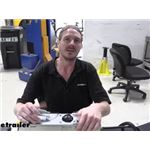
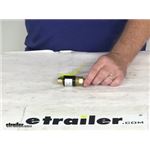
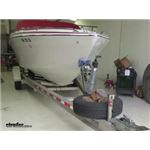















































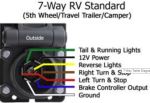
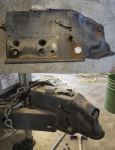
Matthew F.
10/15/2022
Still working well